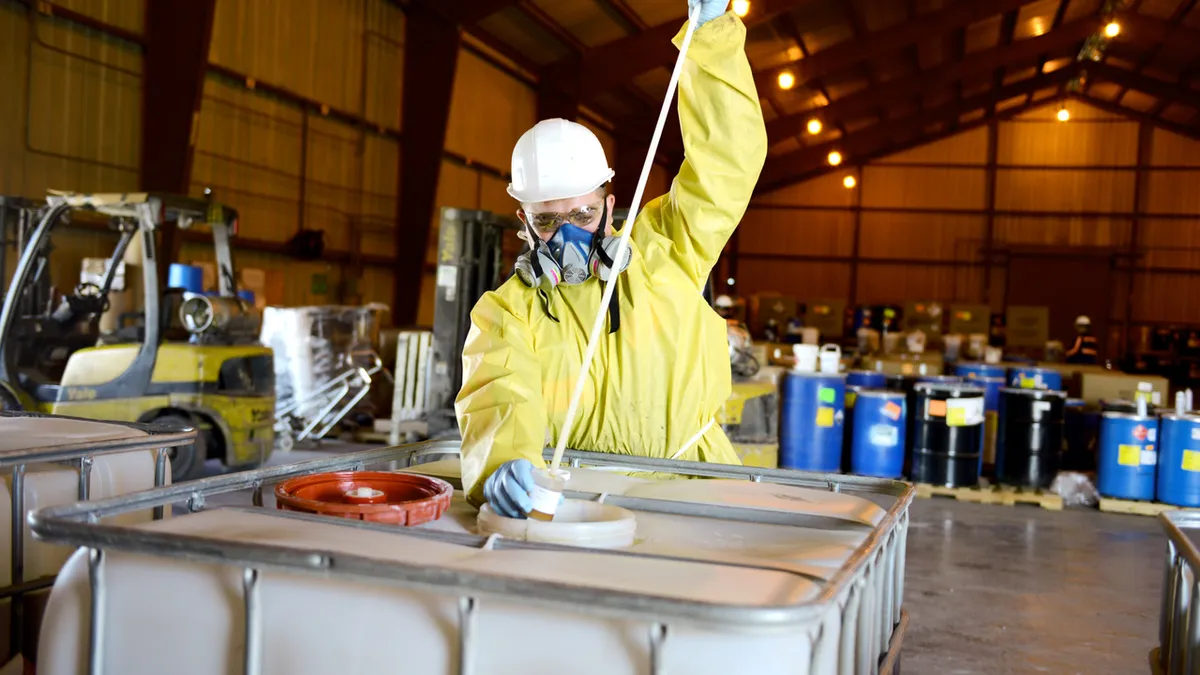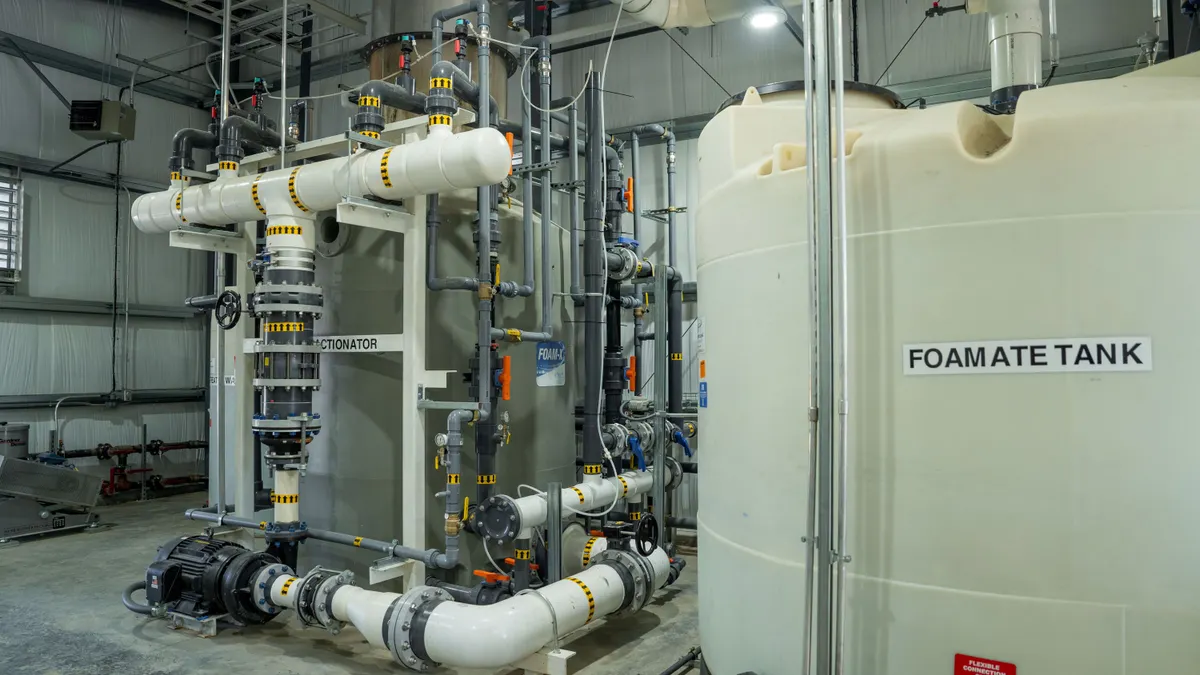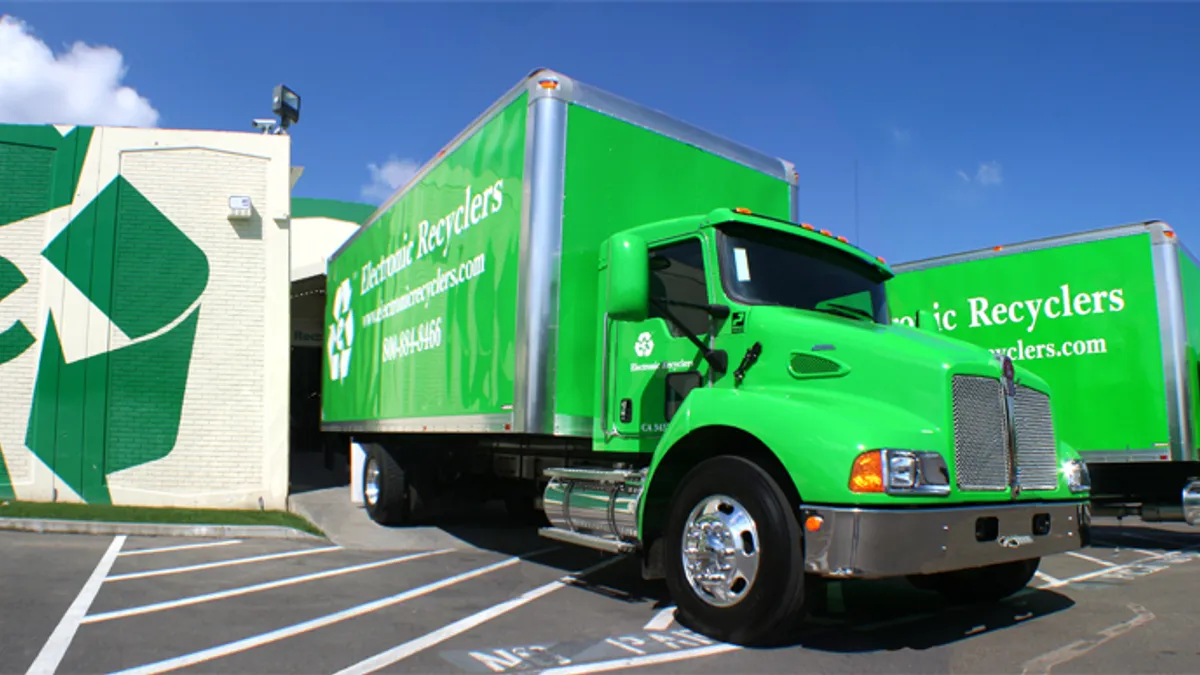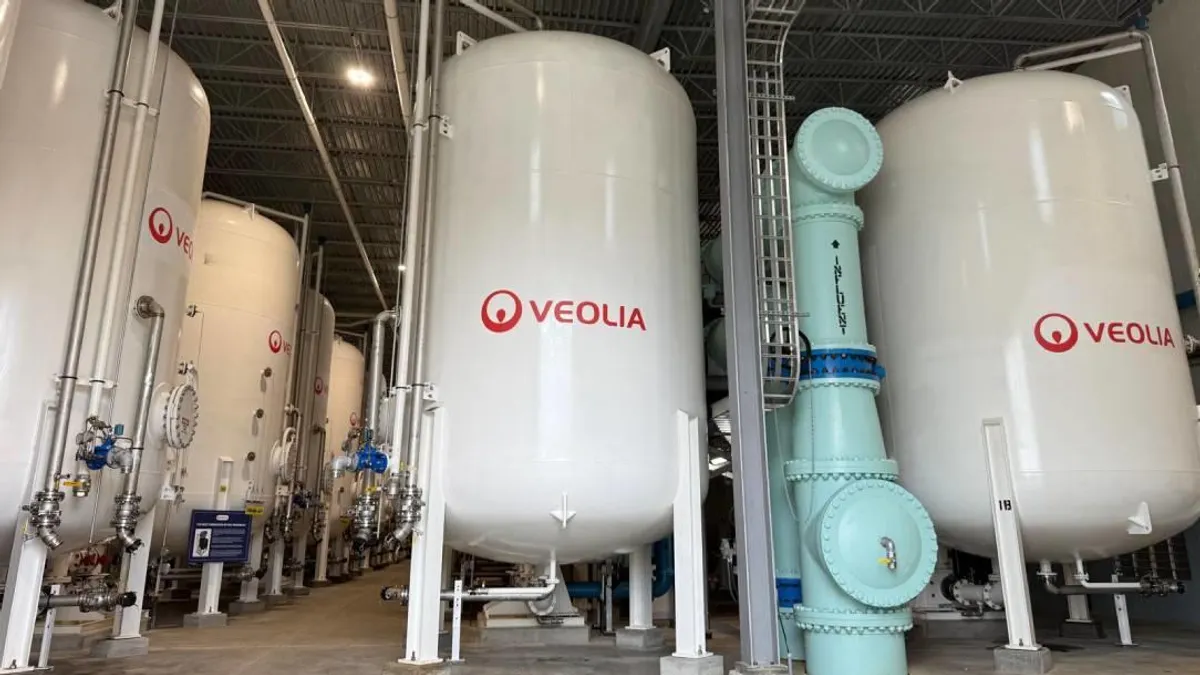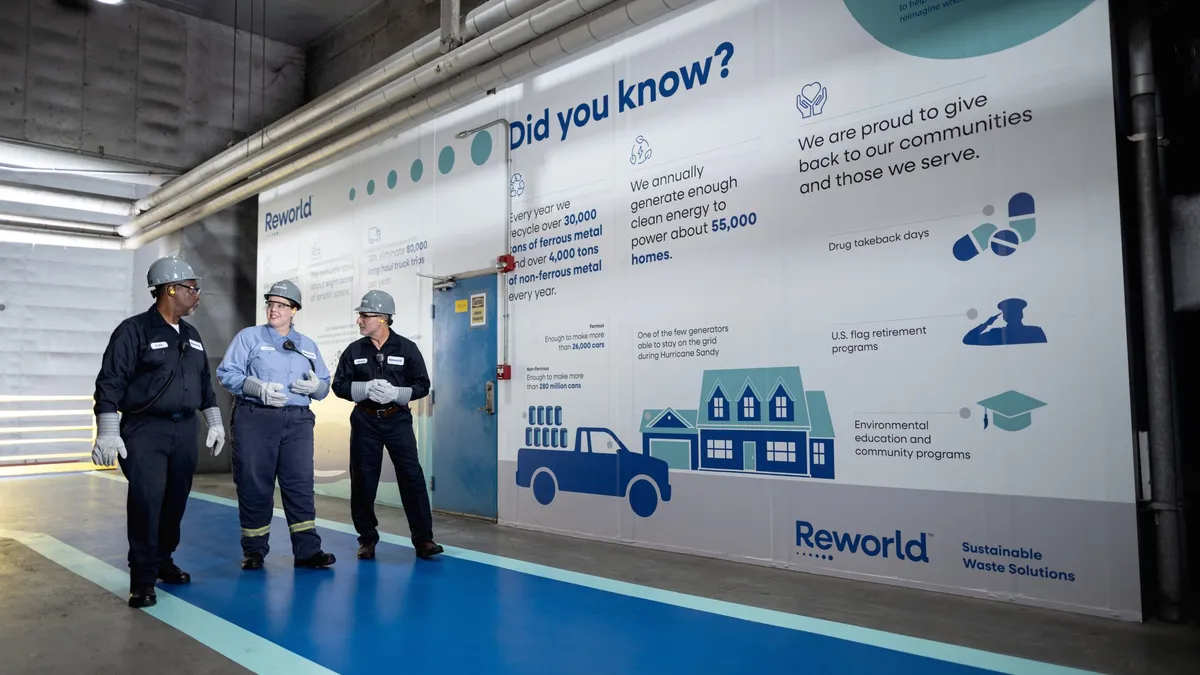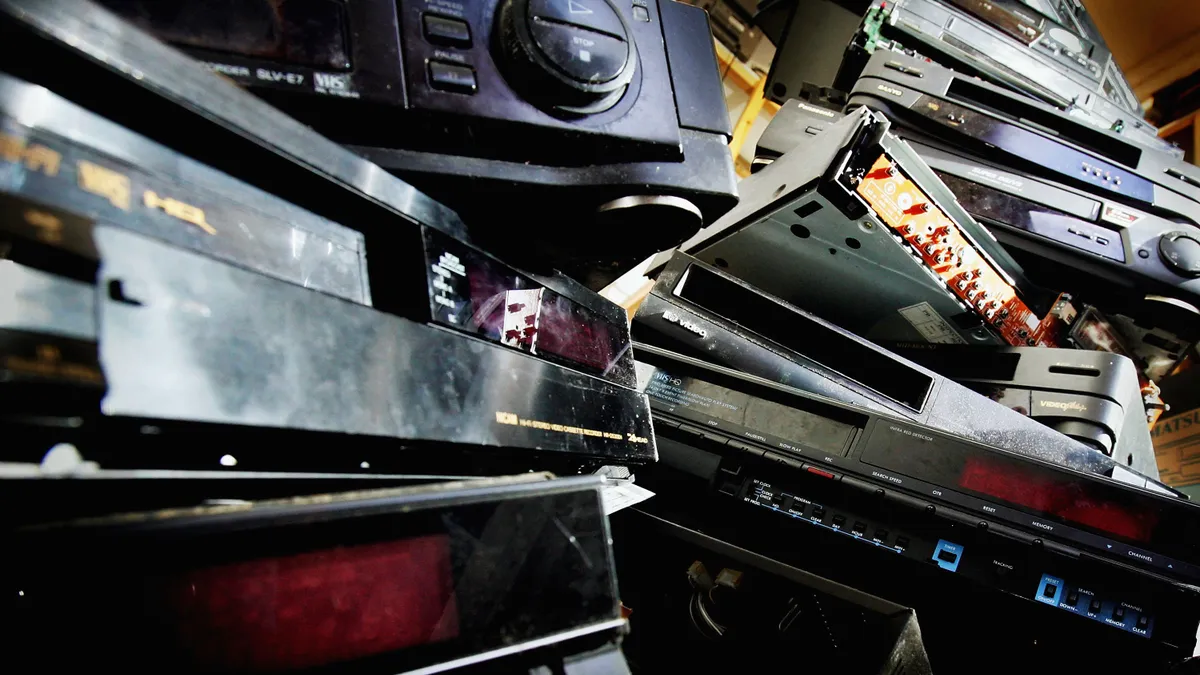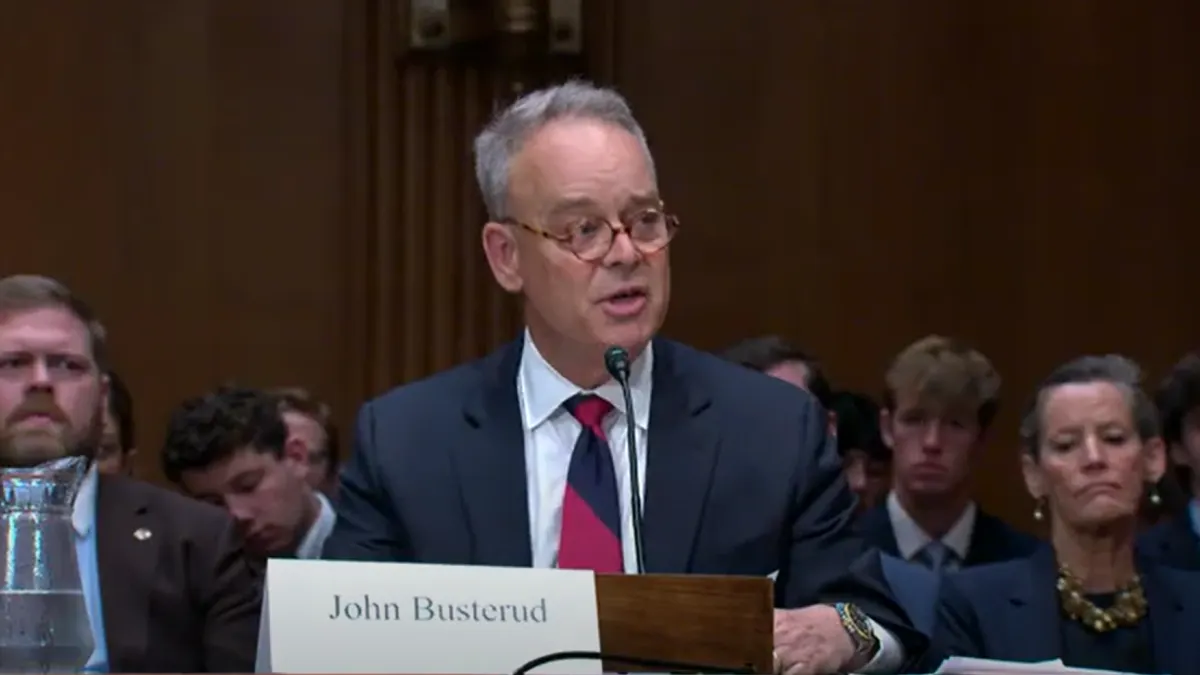Enviri is looking toward a future that drives profits through business opportunities in the fast-growing PFAS management segment, as well as new sustainability service offerings, executives said during an analyst day presentation June 20.
In the next few years, Enviri will focus more of its business on PFAS remediation technologies, which the company sees as one of its biggest growth opportunities in the next five years. It also plans to offer new and “sustainable disposal technologies” for emerging waste streams such as renewable energy and electrification, executives said.
During the presentation, CEO Nick Grasberger highlighted the company’s progress toward shifting its focus entirely to environmental solutions. About 90% of Enviri’s revenue currently comes from environmental business. That compares to 69% in 2019.
Enviri operates Clean Earth, the company’s environmental and regulated waste management services division, as well as Harsco Environmental, which offers material processing and environmental services to the global steel and metals industries. Harsco also has a rail division, which the company is working on stabilizing after pausing plans to sell that asset.
Enviri is also working to better coordinate the suite of services under its three segments in order to guide customers who are looking to comply with ESG obligations or meet new zero waste goals, said Senior Vice President Jeff Beswick. “Sustainability trends are shifting customer demand further towards recycling and reuse and away from landfill and incineration,” he said. The move will also help with cross-selling opportunities, he added.
With that plan in mind, the company’s 2024 revenue outlook is between $2.4 billion and $2.5 billion, and is expected to increase to the $2.6 billion to $2.7 billion range by 2027, said CFO Tom Vadaketh. The company expects this to happen through organic growth through expanding technologies and services and “mastering basics” like improving national accounts and sales process automation. The company also anticipates double-digit adjusted earnings before interest, taxes, depreciation, and amortization growth by 2027. Estimated EBITDA for that year is between $425 and $450 million.
PFAS potential
A major new facet of its sustainability offerings is Clean Earth’s ReSolve segment, which Chief Commercial Officer Elizabeth Peterson touted as “a complete suite of PFAS remediation services” meant to target per- and polyfluoroalkyl substances in everything from leachate to soil. Clean Earth is also working to decontaminate fire suppression systems containing aqueous film-forming foam.
In the next few years, Peterson estimates the total addressable PFAS remediation market to be between $3 billion and $5 billion. About two-thirds of the overall PFAS remediation market will be driven by liquids, such as landfill leachate, AFFF and construction and remediation dewatering, she said.
Beswick sees Clean Earth as well-positioned for PFAS soil remediation jobs because of its familiarity using thermal resorption technologies for other soil treatment work. For liquid PFAS remediation, the company “is actively upgrading its technology” and plans to start offering a new foam fractionation technology later this year.
Across the industry, leachate management is what’s drawing most of the PFAS remediation revenues, but the market will evolve over time, Beswick said. The federal government is one of the largest customers for the PFAS remediation industry, particularly the U.S. Department of Defense, and she said Clean Earth and other companies “are trying to be well aligned with them from a project management perspective.”
The company also continues to focus on identifying additional methods that can destroy PFAS, rather than landfilling it or using deep well injection treatments. “We believe destruction to be a superior technology to reduce long term risks and liabilities,” Peterson said.
Clean Earth currently has four PFAS mitigation projects underway. One is a foam fractionation deployment at its Detroit facility, and another is an an onsite soil remediation project at Oceana Naval Air Station in Virginia Beach, Virginia. Clean Earth is also testing several destruction technologies for the DOD at its facilities in Detroit and Charlotte, North Carolina. It is also conducting a “thermal disruption” trial at its Fort Edward facility, Peterson said.
Rail complications
As Enviri invests in PFAS opportunities, it is also working to address business challenges, mainly with its Harsco rail assets. Enviri announced during its May earnings call that it had paused plans to sell its rail assets due to risks associated with some of its large European contracts. “The strategic and financial objective remains to divest Harsco rail at the right time,” Grasberger said during the investor day presentation.
The Harsco rail segment specializes in equipment and aftermarket parts services, as well as some technology services. Grasberger said the core North American business is “very healthy,” but its engineered-to-order contracts in Switzerland, Germany and the United Kingdom have been negatively impacted by inflation, “complicated supply chains” and other railroad operations challenges. Harsco entered these contracts at fixed prices before the COVID-19 pandemic, and “no one in their right mind would have ever signed up to the terms in those contracts if they knew what was coming.”
These contracts have had an “extraordinary” impact on the company’s financial and strategic goals, he said. Grasberger said the company has invested $200 million of cash flow in the three European ETO contracts over the past five years and has faced about $100 million in losses. The company had planned to retire some of its floating rate debt using proceeds from selling the rail business, further complicating that segment’s financial picture.
Enviri expects the ETO contracts to wind down in the next 12 to 18 months, which Grasberger said should make it easier to then find the right buyer for the rail business. In the meantime, Enviri is negotiating with Deutsche Bahn with the goal of reaching a settlement on its German contract so it can cover some of the costs it has incurred.
The overall rail segment’s performance has improved in recent quarters, and although it will “continue to be a cash consumer this year, as we look ahead, it will slowly turn into a cash generator as we start delivering these vehicles and the equipment that we have under these three large contracts,” Vadaketh said.



